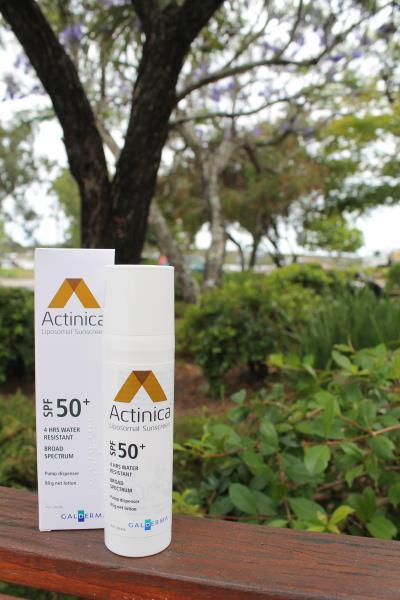YOUR sunscreen is an important factor in keeping your skin protected from the effects of the outdoors yet with so much choice on the shelves how do we know what is best for both the inside and out when it comes to skin protection. Sharon Cassidy from Riverside Beauty shares some tips on sunscreen.
THE Australian Sunscreen Standard recommends an SPF of 30-plus. The sunscreen must also have the expiry date (usually one to two years) and storage conditions.
Sharon says: “It’s not worth the risk if your sunscreen has expired. Not only might it not be protecting you effectively from the sun’s rays but the greasiness and chemicals from expiring may also be affecting your skin in other ways”.
Over exposure to ultraviolet radiation can cause short-term health effects such as sunburn. Long-term exposure to ultraviolet radiation can increase the risk of damage to the skin and eyes in the form of skin cancers and cataracts.
UVA was always thought to be the less threatening of the suns rays and most of us have been exposed to large amounts of UVA throughout our lifetime.
Although less intense then UVB, UVA rays are 30-50 times more prevalent and can penetrate clouds and glass.
Research is now showing UVA penetrates the skin more deeply and plays a major part in skin ageing, wrinkling and some forms of skin cancers. It is also the dominant tanning ray.
UVB is the chief cause of skin reddening and sunburn and tends to damage the skin’s more superficial epidermal layers. It plays a key role in the development of skin cancer and contributes to tanning and photoaging.
UVB rays are more intense during the hotter months from about 10am to 4pm but they can burn and damage skin all year round.
“Where you can, always try to have a broad spectrum sunscreen and keep applying throughout the day but especially when you are outdoors or driving,” Sharon said.
“When you wear sunscreen the SPF (sun protection factor) indicates how long it will take for the UVB rays to redden skin when using a sunscreen compared to how long it would take if they were not wearing it.
“The purpose of using sunscreen is to reduce UV ray exposure not to extend time spent outside in the sun. Stick with the 30-plus where possible and avoid sitting in direct sunlight where you can.”
There are two types of sunscreens – chemical absorbers and physical blockers.
Chemical absorbers are the most common as they absorb the UVR with a chemical barrier.
A sunscreen that scatters or reflects UV rays from the skin is a physical blocker and is mostly associated with zinc creams. However more and more of these types of blockers are coming onto the market as they able to both block and absorb, thus giving the user even more protection.
Sharon said studies have found physical sunscreens are significantly less allergenic or irritating as they do not penetrate the epidermis and are recommended for acne or sensitive skin sufferers.
So what should you look for? For women, healthy skin is an important factor in their skin regime, but many sunscreens can be greasy and clog up pores.
Sharon said when it comes to keeping your skin healthy, protecting it from harsh weather elements is always important.
“We sell Actinica Liposomal Sunscreen which is a great product available for people with a high risk of skin cancer,” she said.
“Actinica is SPF 50-plus and water resistant for up to four hours. Daily use can aid in the prevention of sunspots, premature skin ageing and may assist in preventing some skin cancers.”
Riverside Beauty is at 6 Thomas Street, Noosaville. Phone 5449 9744 for an appointment.







